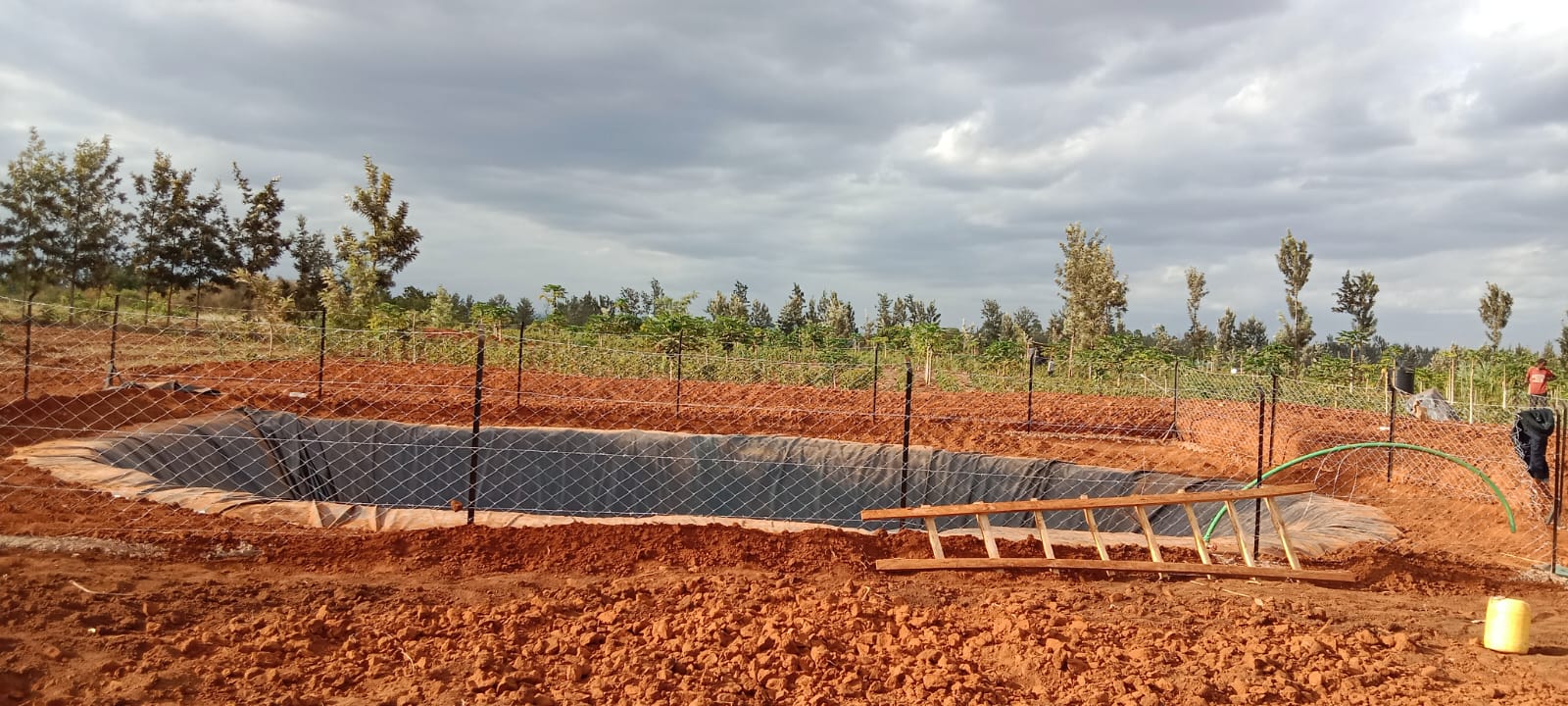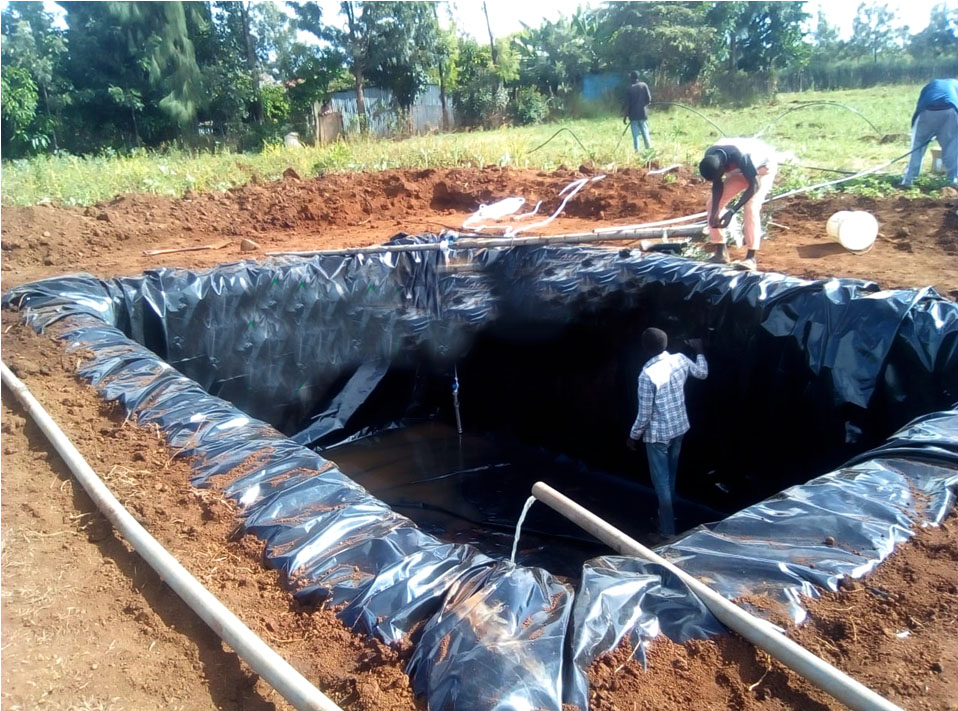Dam Liners Price In Kenya
Dam Liners
Our Dam Liners are available in 0.3microns, 0.5microns, 0.8microns and 1mm thickness and can be made to suit any size of the reservoir.
We ensure they are heavily protected to make certain no damage occurs during transport.
Dam Liners Price In Kenya
Our dam liners price in Kenya is broken into 3 units
- material cost
- welding cost
- installation cost
Transport costs apply where we transport the liner to the client’s site
| Liner Thickness | Material Cost In Kes | Welding Cost In Kes | Installation Cost In Kes | AMOUNT IN KES |
| 0.5mm | 220 | 25 | 25 | 270 |
| 0.75mm | 300 | 25 | 25 | 350 |
| 1mm | 380 | 25 | 25 | 430 |
Grekkon Limited’s dam liners price in Kenya is according to the liner thickness, and the scope of work if it is a dam liner installation project. Our UV treated black dam liners are manufactured for tropical climates that experience extraordinary radiation throughout the year. Grekkon Limited’s dam liners line the walls and floors of water reservoirs to prevent water loss through sipage into the soil. There is a changing rainfall pattern and unpredictable seasons in Africa, the need for agriculture water conservation is growing amongst farmers.
We factory weld our dam liners which keeps them leak proof during their entire lifetime of use. Leaking is a common occurrence with a manually welded geomembrane. So we only allow it where it is impractical to factory weld
Dam Liners Price In Kenya
Types Of Dam Liners
Our dam liners are available in 0.5mm, 0.8mm, and 1mm thicknesses. We supply in tailor-made widths that suit the size and shape of the reservoir or tank. Grekkon Limited’s technical team conducts the installation. Then together with the client, we test the installed geomembrane over the next days or weeks to ensure no leakage happens.
To support the liner in a reservoir, the owner does a trench at a distance of 1M all around it. This trench is a foot deep and a foot wide. Once installation within the reservoir is complete, tuck the liner edges this trench and cover. This holds the liner in place during its period of use. For the tank, a steel or wooden band supports the liner in the inner tank’s wall for covered tanks. For the walls of the outer tank for open water tanks.
Knowing the desired thickness
i. The volume of water held. The larger the volume the greater the weight and a thicker liner in place
ii. The wall and floor surface texture. Thicker liners are for rough surfaces
Dam Liners Price In Kenya
Positioning Your Water Reservoir For Irrigation
This depends on:
i. The source of water going into the water pan. If the source is from a lower altitude water source such as a river or lake, the water pan is at an elevated position so that with a water pump, the water is reticulated through irrigation water pipes to the water pan. If the water source is from rain water falling on the roofs or run-off, the water pun is positioned at a lower gradient
ii. Preferred irrigation method. If by sprinkler irrigation or rain hose kits which require high pressure from a water pump, the water pan will be situated at any point. If by low gravity pressure say for drip or button drip irrigation, then it will be at the highest point of the farm

Dam Liners Price In Kenya
How to calculate your dam liner requirement
The dam liner calculator works according to the shape of the reservoir.
I. A square or rectangular steep sloped sides
Total length in meters: (length + 2depth + 2meters). Total width in meters: (width + 2depth +2meters). The additional 2 meters on each side are for the overlap which is tucked in a trench for water reservoirs.
For tanks, it’ll be 0.5M. Multiplying the total length with the total width gives the pond liner area in meters
II. A square or rectangular slanted sides
[Length + (2* slanting height) + (2 meters allowance)] + [Width + (2* slanting height) + (2 meters allowance)]
III. Oval / circular shaped water reservoirs
Diameter + (2height/ depth) + (2 meters allownce)
IV. Oval / circular shaped water tanks
Diameter + (2height/ depth) + (0.5 meters allowance)
Dam Liners Price In Kenya
How to weld your dam liner
Our dam liners are factory welded with a hot wedger machine. Where the welding must be done on site, a hot blower will do this for 0.5mm to 0.75mm thicknesses. However, for 1mm, a hot wedger machine will be in use on site too
After dam liner installation is complete, fence off the water pan to prevent accidents by drowning when animals or persons fall into the water reservoir

Dam Liners Price In Kenya
FAQs
What kind of pond liner is best?
The best dam liner to use depends on the volume of water held and the surface type. If it is a large reservoir, a thicker liner is better. If the surface is smooth then a lighter gauge liner will work.
What are the different types of dam liners in Kenya?
- By thickness. Our dam liner types in Kenya are 0.5mm, 0.8mm, and 1mm thick. They are in widths to fit the size and shape of the reservoir or tank. Grekkon Limited’s technical team will install it together with the client then test the liner over the next days or weeks.
2. By material type. There is polyvinyl chloride dam liner material (PVC), low density polyethylene material (LDPE), and HDPE or geomembrane material. Grekkon Limited supplies the latter

I. Advantages and disadvantages of PVC dam liner type
- Easier to work with than HDPE
- Resistance to acidic compounds
- Less dense than HDPE
II. Advantages and disadvantages of LDPE dam liner type
- softer and flexible
- easier to fold, install on rough terrain
- Less expensive than HDPE
- Has less tensile strength than HDPE
- Tears easily compared to HDPE
- Can stretch out of shape
III. Advantages and disadvantages of HDPE dam liner type
- Dense
- Tougher
- Has a longer life-span
- Very low elasticity
- More difficult to work with
How is liner thickness determined?
i. The volume of water held. The larger the volume the greater the weight and a thicker liner to support greater weight. A domestic water use tank is lined with a o.5mm dam liner because the weight of the water is not much. A water pan to irrigate 500 acres will be lined with a 0.75mm or 1mm dam liner because the water weight is huge
ii. The wall and floor surface texture. Thicker liners will be on rough surfaces because they are less prone to damage by tearing
Can I put an old pond liner over an old one?
No, you cannot. Remove the old liner then replace it with the new one
How long do pond liners last?
It depends on the thickness. 0.5mm lasts for 12 years, 0.75/ 0.8mm 20 years, and 1mm 35 years. Keeping extend the working life of your liner, keep it under water throughout, and create a fence or hedge around the water pan. The latter keeps away animals from destroying the liner
What material is dam liner?
Our dam liner material is virgin (none recycled) high density polythene (HDPE)
What is the width of a dam liner?
Our dam liner width is 8M
| Dam Liner Thickness | 0.3microns, 0.5microns, 0.8microns, 1mm |
|---|
Only logged in customers who have purchased this product may leave a review.







Reviews
There are no reviews yet.